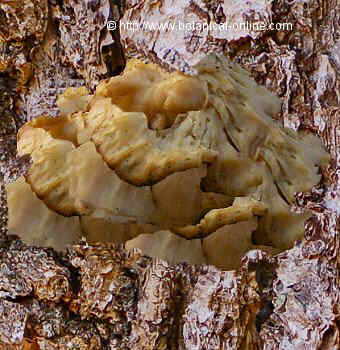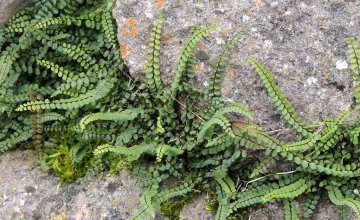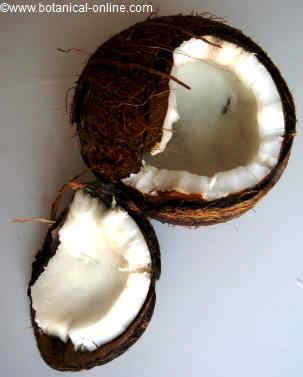Contents
- 1 CHARACTERISTICS OF MAITAKE MUSHROOM
- 2 MEDICINAL PROPERTIES OF MAITAKE MUSHROOM
- 2.1 REMEDIES WITH MAITAKE MUSHROOM
- 2.2 Maitake mushroom for cancer treatment
- 2.3 Maitake for the treatment of AIDS
- 2.4 Maitake for the treatment of respiratory diseases
- 2.5 Treatment of circulatory diseases
- 2.6 Side effects of maitake mushrooms
- 2.7 Contraindications of maitake mushrooms
- 2.8 Food properties of Maitake
- 2.9 Where to buy maitake mushrooms
CHARACTERISTICS OF MAITAKE MUSHROOM
What is maitake mushroom?
Maitake mushroom (Grifola frondosa) is a fungus of the Polyporaceae family. It is a native fungus from northwestern Japan and the United States. It can be found elsewhere in Europe.
It is characterized by forming grayish brown fan-shaped mushrooms 2 to 7 cm in diameter, tuberous stem from an underground structure that resembles a potato.
The foot is milky white and hardens as it matures. Mushrooms gather together overlapping on each other and forming groups that can acquire monstrous dimensions and weigh more than 45 kg. Growth occurs during the summer or fall on the floor beside the base of trees or stumps.
Maitake word is Japanese and means “fungus or mushroom dancer”. The reason for this name is not clarified, although there are different theories that argue that it could come from the similarity of this fungus with flying butterflies or skirt dancers.
Others argue that this name wants to express the joy felt by the seeker of fungi when found because this fungus is very appreciated. (The person who finds it “dances with joy”)
The importance of this fungus in Japanese cuisine is vital, constituting, along with shiitake,the most prized fungi. Its importance not only focuses on the kitchen.
Since ancient times it has been used in Eastern medicine as a major healing remedies. Its use is spreading to modern medicine by the proven properties demonstrated in studies conducted in recent decades.
Common names of maitake

Photo of maitake
In addition to “maitake” which is its most common name, it is recognized by other names. In Spanish is called leafy polypore, imperial fungus or chestnut fungus; In Catalan is recognized as “Girgola of castanyer” and Euskara as ardagai hostotsu.
In English it is known as “Hen of the Woods” or “Head of sheep”, while the French also call it “Hen of the Woods – (Poule des bois)”
Traditional properties of maitake mushroom
Maitake mushroom, along with reishi and shiitake mushrooms have been traditionally used by Eastern medicine to strengthen the immune system and to prolong life.
Since ancient times, it was observed in Japan and China that people including maitake in their diet had fewer diseases and lived many more years than those who did not eat it.
During the fourteenth and sixteenth centuries in China it was considered that this mushroom increased vital energy, to the point that it was usually included in the diet of the warrior monks.
How to eat maitake mushrooms?
In the eastern kitchen, ma¡take is eaten fresh or dried. With it, they generally prepare dishes in which the mushroom is cooked in slow fire combined with other foods in a broth that is very nutritious, tasty and healing.
It can also be bought dried or as crushed powder to be cooked as soups.
Whether one way or another, oriental cuisine has achieved with these fungus to combine the properties of food and medicine.
* Related information: Maitake salad
MEDICINAL PROPERTIES OF MAITAKE MUSHROOM
REMEDIES WITH MAITAKE MUSHROOM
Among the many medicinal properties of this mushroom we can mention the following:
Maitake mushroom for cancer treatment
One of the main applications of this mushroom is its ability to assist in the treatment of cancer. Japanese cancer patients use a combination of maitake, shiitake and reishi to increase their defenses. In this way, they can reduce the doses of chemicals in the treatment of chemotherapy while protecting their cells from damage caused by this treatment.
It has been observed that the negative symptoms of chemotherapy such as vomiting, nausea or physical exhaustion decrease after taking these preparations.
This property is mainly due to the action exerted by the polysaccharide Beta-D-glucan on the immune system. This complex carbonate has the ability to raise the level of interferon, a protein that inhibits the growth of viruses and tumors, while encourages action of macrophages, T cells and NK cells.
Thus, the defense system is mostly able to distinguish those foreign elements, virus-infected cells or tumor cells and destroy them before they cause tumors or possible diseases.
Recent experiments carried out seem to place great hope in the management of prostate cancer.
(The usual way to treat any type of cancer is usually by ingestion of supplements. Check with your doctor or oncologist about the possibility of taking a combination of supplements maitake, shiitake and reishi)
Similarly, this mushroom is useful not only for people who are sick with cancer but also helps protect healthy people preventing the development of cancerous tumors.
In this case, we would not need the use of such intensive treatment. It would suffice to include this food from time to time in our usual diet to benefit from this property.
Maitake for the treatment of AIDS
Its ability to boost the immune system can be very interesting in the treatment of human immunodeficiency virus (HIV).
Maitake is combined with reishi and helps prevent the appearance of numerous diseases that take advantage of very weakened defenses by Aids. (Consult your doctor or specialist about the possibility of taking a combination of maitake and reishi supplements)
Maitake for the treatment of respiratory diseases
The antiviral and anti-inflammatory properties of maitake have proved very useful in the treatment of respiratory diseases.
The combination of reishi and maitake supplements help protect the body and decrease the duration and symptoms of these diseases.
Maitake also has an abundant amount of acetic acid and malic acid, along with other compounds (quinones and terpenes) that provide it with antibacterial and bacteriostatic properties, that is to say, they are able to kill or inhibit the growth of bacteria.
(Take a combination of both mushrooms in capsule form according to the patient’s leaflet) Among the diseases that could be treated, we can mainly point out bronchitis and sinusitis,
Treatment of circulatory diseases
Maitake has antiplatelet, anticholesterolimic and antihypertensive properties. All this makes it a very interesting in the treatment of circulatory diseases. Among them, we can mention the following:
- Heart attacks: The ability to thin the blood and prevent the formation of thrombi makes it a very good ally against many heart diseases, such as heart attacks. (Take a maitake and reishi combination in the form of capsules according to the patient’s leaflet)
- Hypertension: The above preparations can help lower high blood pressure.
- Cholesterol: It is believed that to eat maitake mushrooms or take preparations made with this mushroom can help people reduce cholesterol levels in the blood.
- Chronic fatigue syndrome: The tonic properties of this fungus, along with its ability to stabilize sugar levels in blood, becomes an aid in the treatment of chronic fatigue syndrome. (Take supplements of maitake and shiitake or combine both according to the patient’s leaflet)
- Diabetes: Maitake’s ability to maintain constant levels of blood sugar or decrease them when they are high is of interest to people suffering from diabetes. (Take supplements of maitake and shiitake or combine both according to the patient’s leaflet)
Side effects of maitake mushrooms
In general, maitake is safe when used in appropriate doses although prolonged and continued use beyond three months may produce some side effects such as gastritis, itching and skin rashes, dry mouth, blood in the nose or in depositions. When shown any adverse effects stop taking immediately.
The use of fresh maitake can cause diarrhea or upset stomach, which it does not usually occur when taken in supplement form (capsules, tablets or pills)
During the first few days, it may affect sugar levels that are compensated after a few weeks of administration.
Contraindications of maitake mushrooms
Pregnant or nursing women should not take these preparations except when authorized by the doctor.
People who are taking anticoagulants should not take these preparations because its use may thin blood too much.
It should not be taken by people with lupus erythematosus.
Food properties of Maitake
Like other mushrooms, maitake mushrooms contain a very high amount of water (over 90%) and a very low content of carbohydrates and fats. They constitute a fairly rich source in minerals and vitamins.
They are rich in potassium and phosphorus. However, the most noteworthy mineral for its high content is selenium, reaching in some maitake mushrooms a ratio of more than 20 mg per 100 g weight. Selenium plays an important role as an antioxidant, preventing degeneration of cells by free radicals.
Good levels of selenium are needed to maintain good fertility, both male and female. (It helps to increase testosterone levels and sperm count in men and protects ova from free radicals).
Selenium helps decontaminate the body of heavy metals, making it suitable for smokers or people living in highly contaminated sites.
Mushrooms, along with beef, fish, seafood, garlic or asparagus are the richest in selenium food.
They are rich in B vitamins, especially riboflavin (vitamin B2) and niacin (vitamin B3).
Where to buy maitake mushrooms
You can get this fungus in many oriental food stores (Chinese, Japanese, etc.) or health food stores.
Maitake supplements can be bought in pharmacies, herbalist’s and natural stores.
![]() More information on other medicinal mushrooms.
More information on other medicinal mushrooms.








